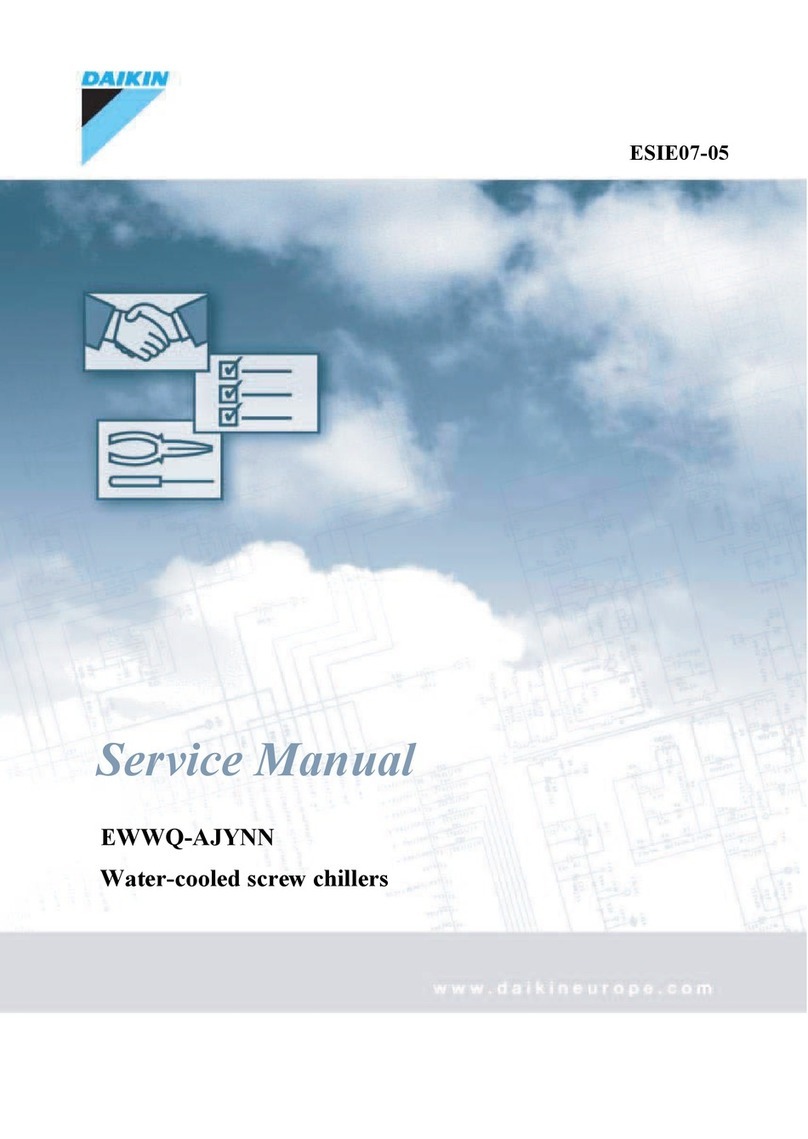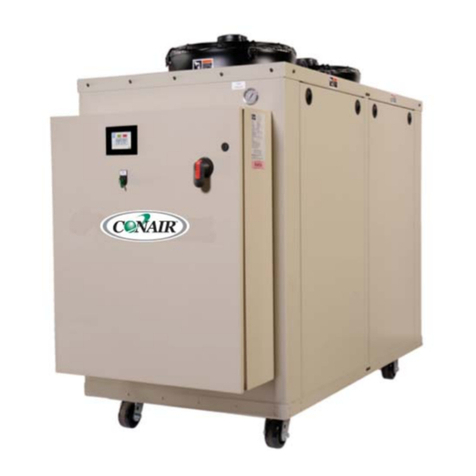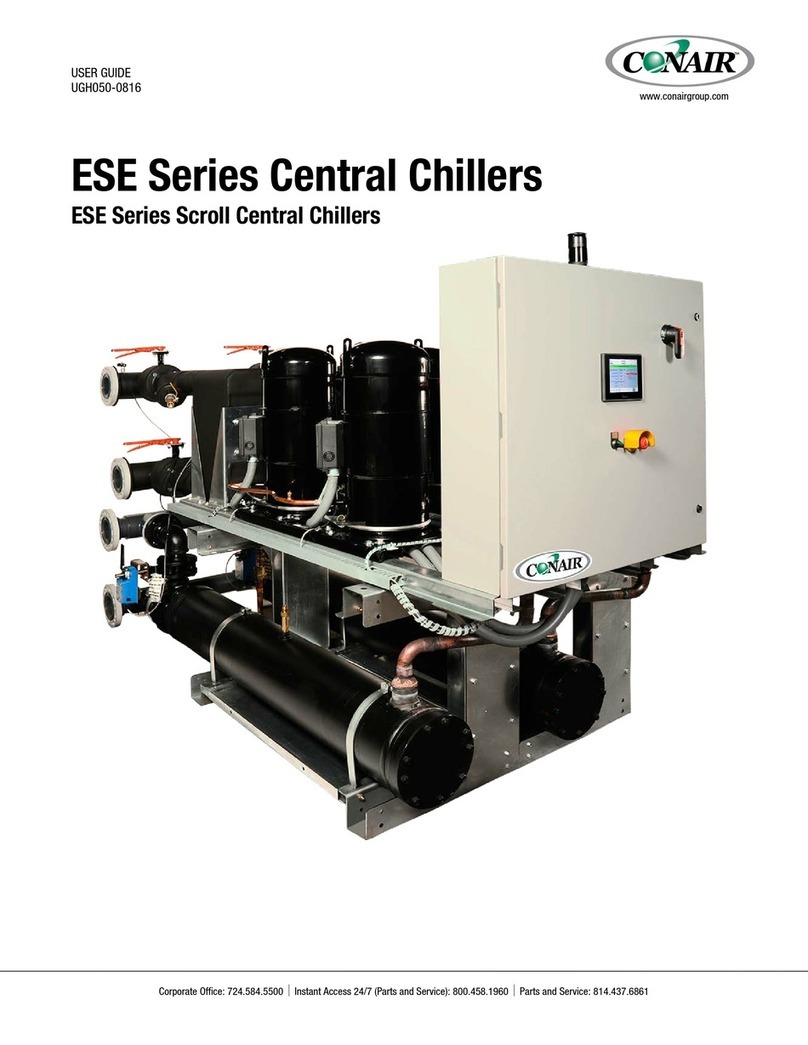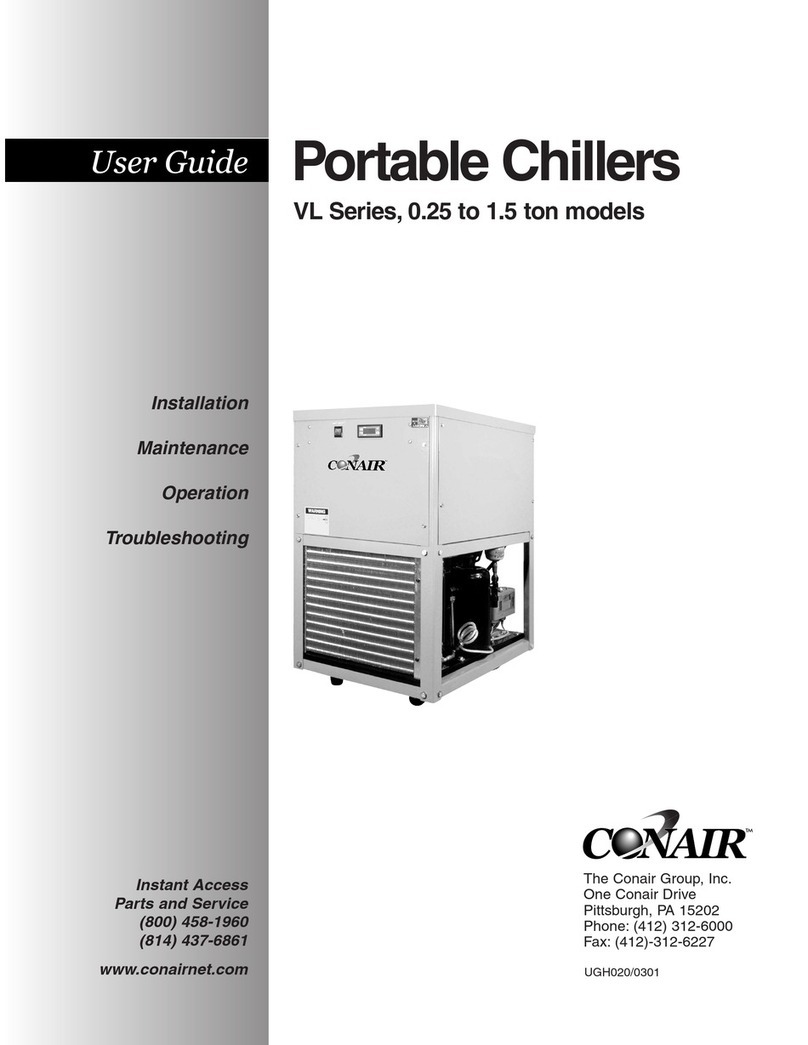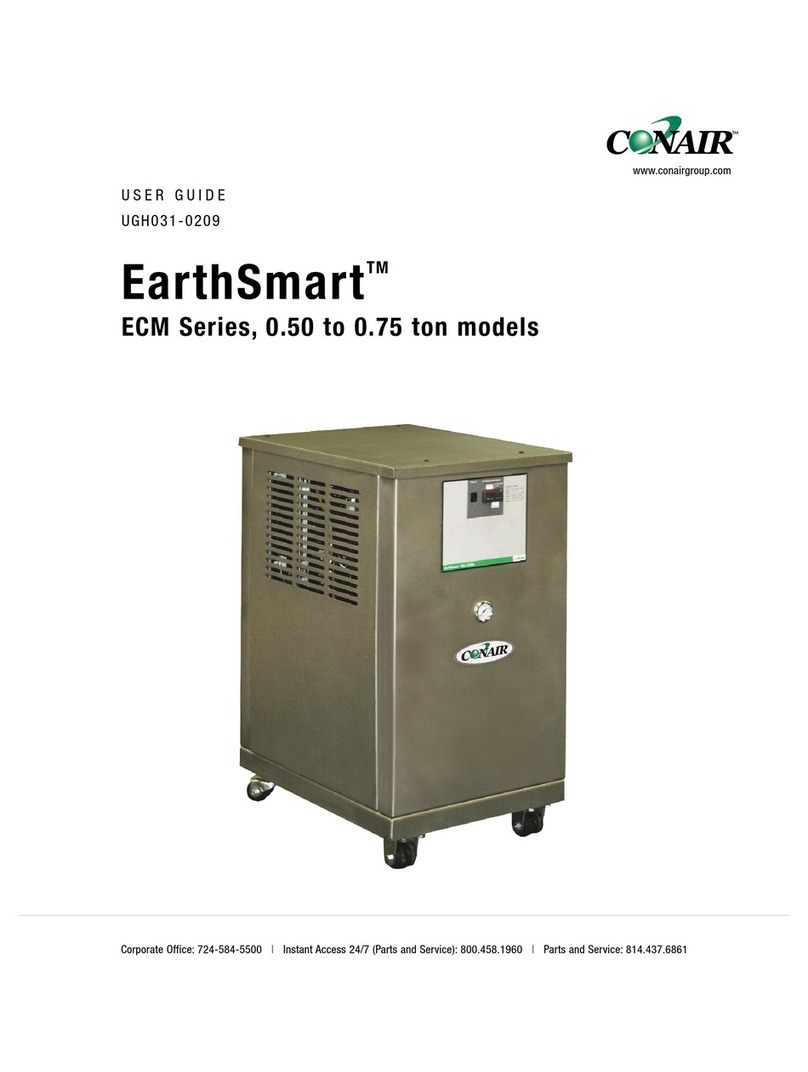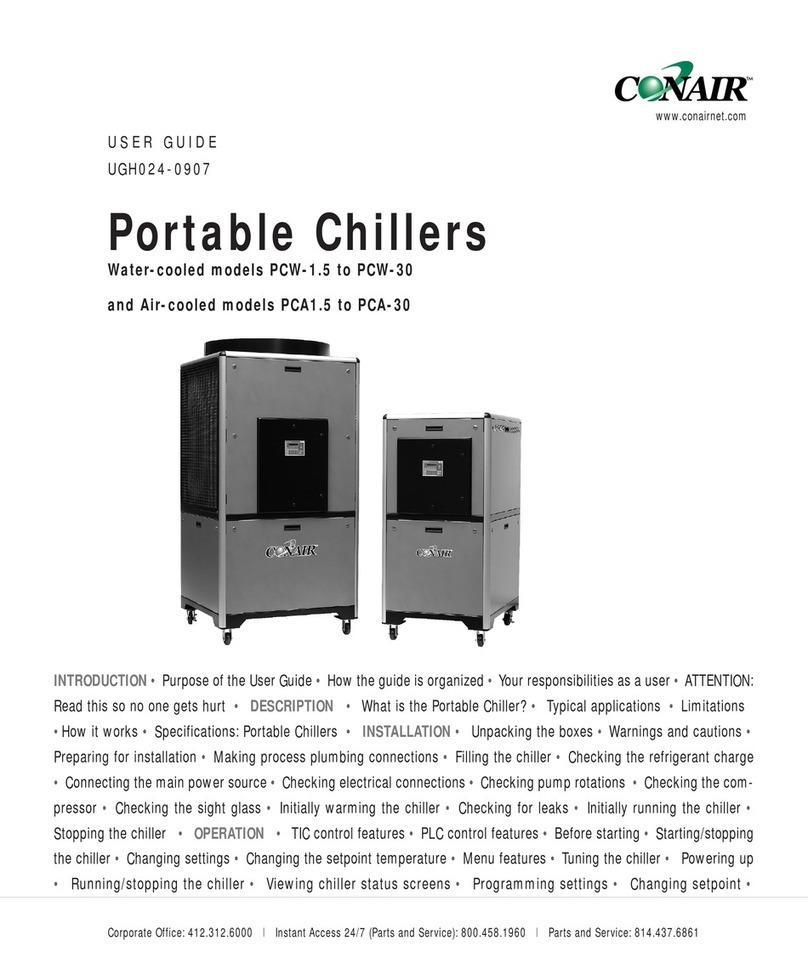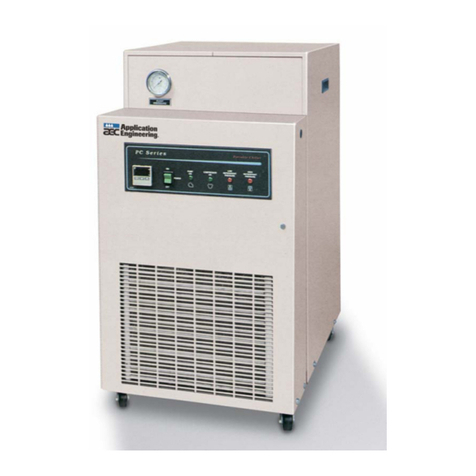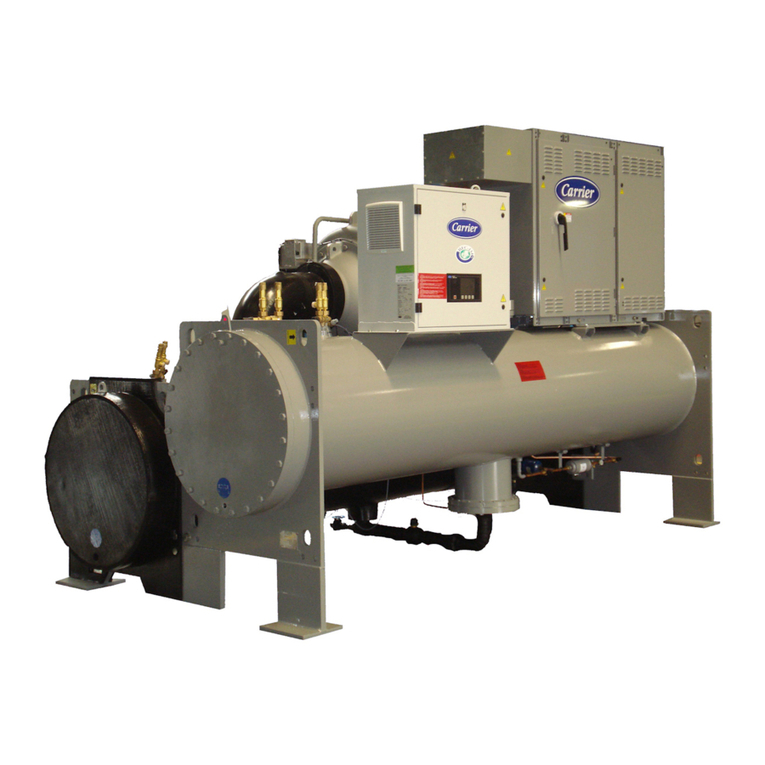Page: 6 VL Series Portable Chillers, 2 to 40 Tons UGH021/0301
1.1 INTRODUCTION
A. This manual covers most ‘VL’ series portable chiller models. Most
‘VL’ series portable chillers are basically identical with exception of
the type of condenser (air cooled or water cooled).
B. All instructions in this manual apply to most ‘VL’ series portable
chiller models regardless of the type of condenser or
instrumentation. Specific instructions relating only to air cooled
condensers, water cooled condenser, or instrumentation are
identified and should be noted by the operator.
C. When calling for assistance from the Conair Service Department, it
is important to know the model and serial number of the particular
unit. The model number encodes critical unit information which is
helpful in any attempt to troubleshoot operating difficulties. The
serial number allows the service team to locate manufacturing and
testing records which can have additional information relating to a
particular unit.
1.2 UNIT LOCATION FOR AIR COOLED MODELS
A. The ‘VL’ air cooled portable chiller is designed for indoor use only.
For most efficient operation, locate the chiller in a clean, dry and
well ventilated environment.
B. The ‘VL’ air cooled portable chiller has an air cooled refrigerant
condenser. For air cooled condensers, a motor driven fan (on
models from 2 to 10 tons) or a centrifugal blower (on models from
15 to 30 tons) generates air flow through the condenser to remove
heat from the refrigerant system. The air cooled condenser on the
‘VL’ portable chiller will discharge a maximum of 15,000 BTU’s per
hour per ton of cooling.
C. The ‘VL’ air cooled portable chiller must have a minimum entering
air temperature of 60°F and a maximum entering air temperature of
95°F for efficient operation.
D. The ‘VL’ air cooled portable chiller must have a minimum of two
feet clearance at the air intake and six feet at the vertical exhaust air
discharge.
1.3 UNIT LOCATION FOR WATER COOLED MODELS
A. The ‘VL’ water cooled portable chiller is designed for indoor use
only. For most efficient operation, locate the chiller in a clean, dry
and well ventilated environment.
1.4 EFFICIENCY
A. Long term efficiency of operation is largely determined by proper
maintenance of the mechanical parts of the unit and the water





